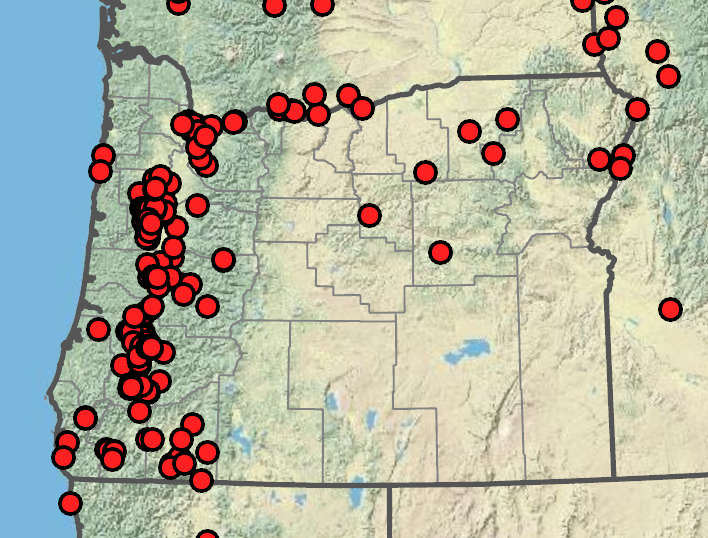Bromus porteri
Bromus sterilis
poverty brome, sterile brome
glabrous.
sheaths densely pubescent;
blades 4–20 cm × 1–6 mm; hairy on both surfaces.
10–20 × 5–12 cm; open, nodding;
branches spreading, usually longer than the spikelets, with 1–2 spikelets.
20– 35 mm, moderately laterally compressed, with 5–9 florets.
smooth or scabrous;
lower glumes 8–10 mm, 1(3)-veined;
upper glumes 12–15 mm, 3(5)-veined.
14–20 mm, narrowly lanceolate, pubescent or puberulent, 7(9)-veined;
margins hyaline;
tips acuminate; bifid, with teeth 0.2–3 mm, awned;
lemma awns 15–30 mm; straight.
1–1.4 mm.
=42, 56.
Bromus porteri
Bromus sterilis
Dry disturbed areas, overgrazed rangeland, disturbed grasslands. 0–1700m. Casc, Col, CR, Sisk, WV. CA, ID, NV, WA; north to British Columbia, east to CO and TX, eastern North America; Europe. Exotic.
This weedy brome with its long, dangling awns is very similar to B. diandrus except that it is more delicate with its smaller glumes, lemmas, and awns.
Barbara Wilson, Richard Brainerd, Nick Otting
- Local floras:
BC,
CA,
OR,
WA
- Local Web sites:
CalFlora,
CalPhotos,
Flora NW,
PNW Herbaria
WildflowerSearch
iNaturalist (observations)
USDA Plants Database
- LBJ Wildflower Center
- SEINet
- Plants of the World Online
- Encyclopedia of Life
- Wikipedia
- Google Image Search



